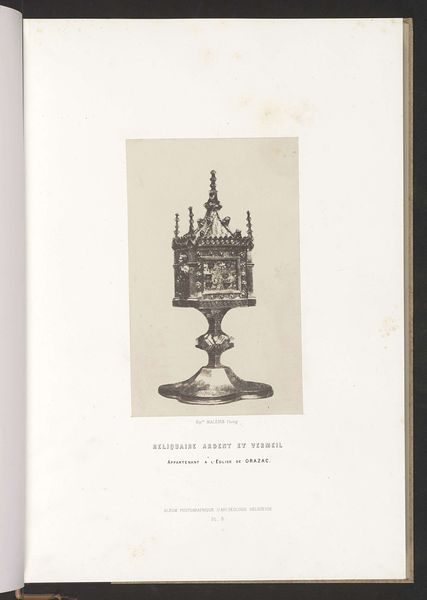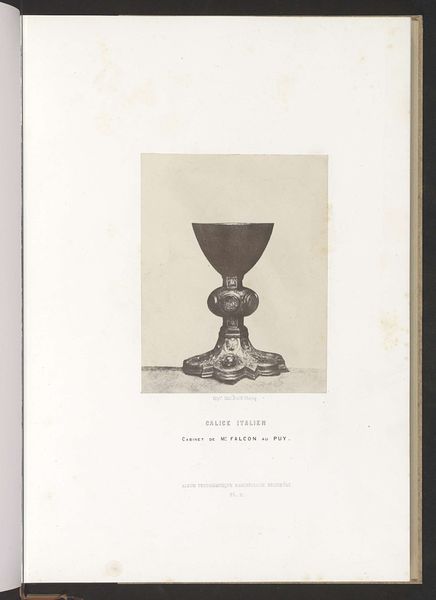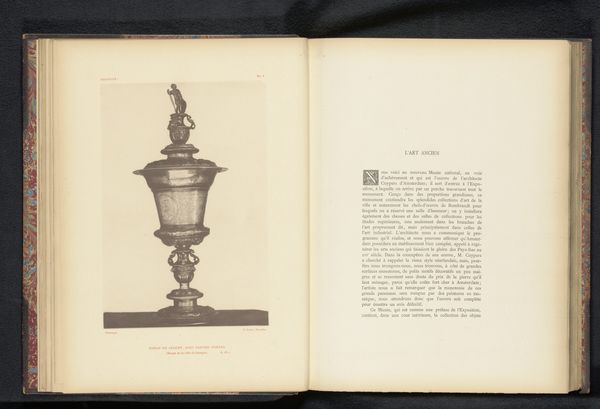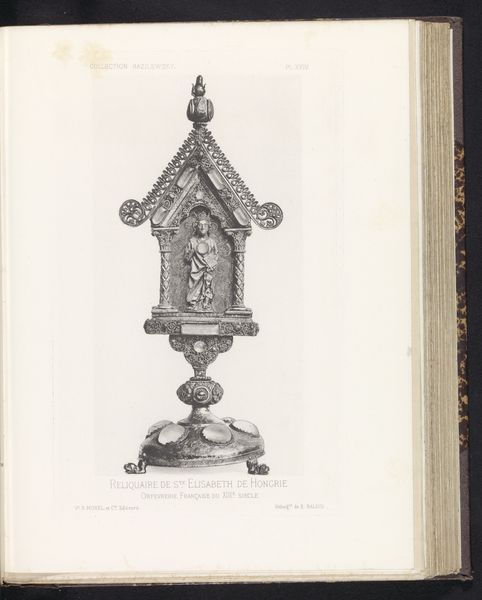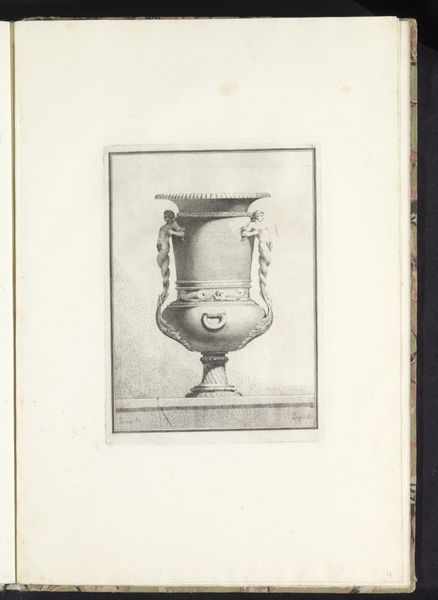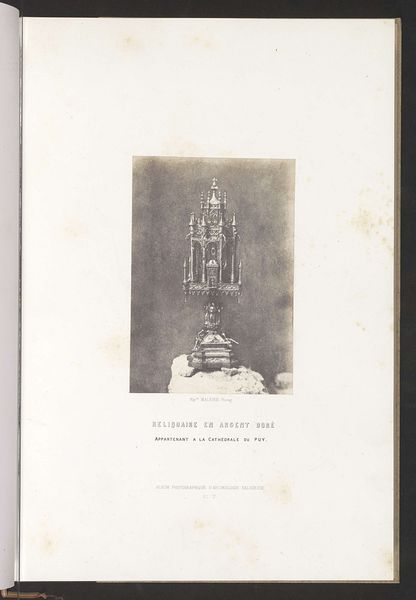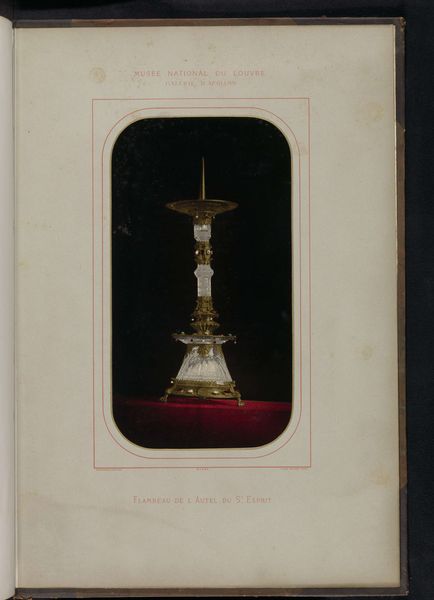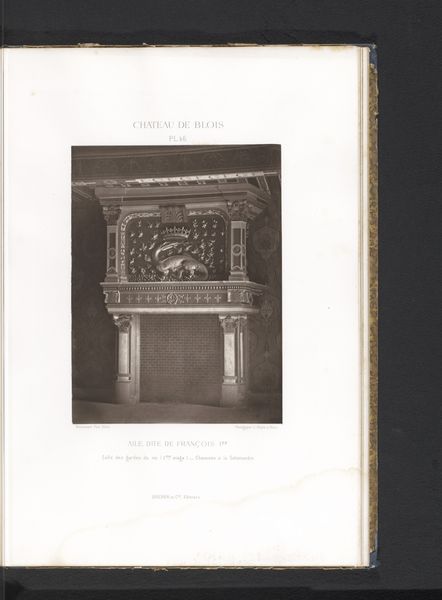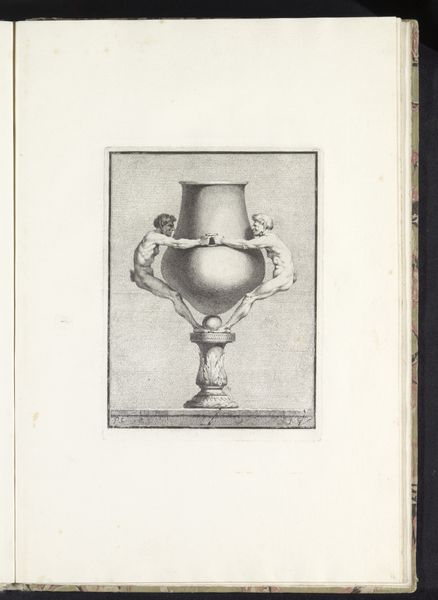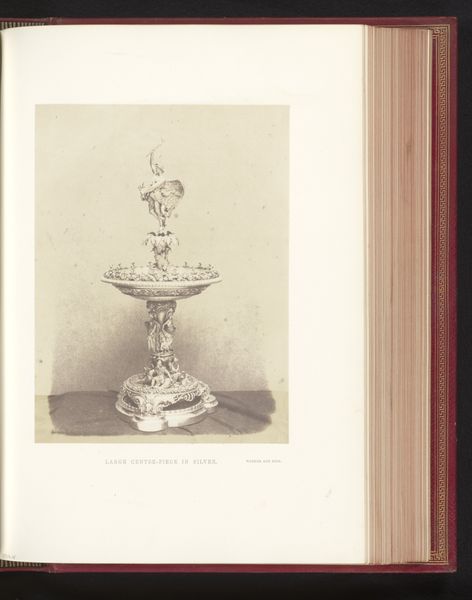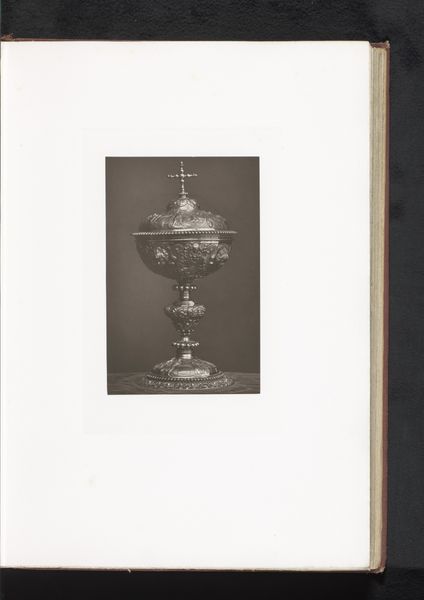
Zilveren reliekhouder afkomstig uit de kerk Saint-Pierre te Champagnac-le-Vieux before 1857
0:00
0:00
print, metal, photography, collotype
#
still-life-photography
# print
#
metal
#
photography
#
collotype
#
realism
#
monochrome
Dimensions: height 180 mm, width 124 mm
Copyright: Rijks Museum: Open Domain
Curator: This photogravure showcases a silver reliquary that originated from the Saint-Pierre church in Champagnac-le-Vieux. It’s attributed to Hippolyte Malègue and dates back to before 1857. What are your initial impressions? Editor: It feels austere. The monochrome palette emphasizes the metallic texture of the reliquary, but also gives the image a solemn, almost melancholic atmosphere. Curator: Indeed. The solemnity reflects the historical and religious context of the object. Reliquaries were significant because of their perceived sacred power linked to relics of saints. Examining this image allows us to consider the power dynamics embedded within religious institutions and the objectification of holy figures through material culture. Editor: I am drawn to the structural elements of this piece. Note how the eye is drawn upwards by the geometric progressions, from the base to the ornate box at the top, the entire design conveying a sense of ascent, emphasized further by the monochrome toning that reduces the composition to a matter of gradients. Curator: Absolutely. We must also consider that by the mid-19th century, photography began documenting and disseminating imagery of important religious objects, and in so doing democratizing their access for broader audiences. This challenges conventional hierarchies of access related to religious authority and privilege. Editor: The artist uses the collotype process skillfully. You see the tonal range he manages to get on the metal, and it is easy to distinguish both textures and shapes. It also flattens the image and removes the object from its space; an illusion, after all, constructed through light. Curator: I would also add the dimensions of representation that we ought to consider when faced with objects like this. How does the act of photographing the reliquary affect its aura, its sacrality? Is this piece a neutral form of documentation or another step to take control over its significance? Editor: A pertinent question. The play of light, and the forms, lead us into questioning both the nature of depiction and the cultural context it exists within. Curator: A good balance struck between material presence and social questions in this photograph of the reliquary, I would say. Editor: Indeed. And by focusing our analysis on its form, we have a greater knowledge to think critically about it.
Comments
No comments
Be the first to comment and join the conversation on the ultimate creative platform.
